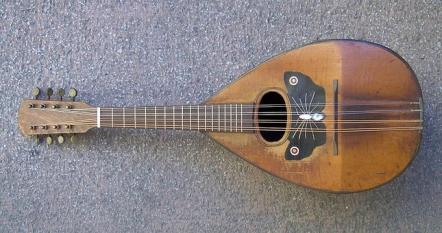New York, NY (Top40 Charts) Learning to play an instrument brings great joy to any musician; it becomes their biggest passion in life. If you're a beginner and are looking to embrace the String family with a very integral member, the mandolin, then you've come to the right place.
Here, we offer the ultimate guide to mandolin for beginners so you can make music that you love.
Choose Your Desired Genre
Find out whether you want to embody the mandolin's musical styling used by bluesy Bob Dylan or rock n' roller Eric Clapton, or do you want to immerse yourself in country bluegrass or traditional Irish folk music. Start by listening to a bit of everything; this way you can really develop an ear for the mandolin and better understand the genre that appeals to you. It will help you develop your own style while paying attention to the great composers that inspired you. Take a listen to the folk and country melodies to invoke your preferences. Don't worry about perfecting your own sound; a music teacher will help you make your personalized mark with the instrument.
Select the Right Style
Even though mandolins can be used to play any music genre, different instrument styles are better suited to different music. For instance, an A or F style mandolin is better suited to bluegrass music. These styles have different appearances and aesthetics as well; A-style mandolins have a teardrop shape while F-styles have a stronger curl at the bottom. Bluegrass players use both of these mandolin instruments as they tend to embody the right character.
European folk musicians typically use the bowl-backed shape mandolin, also known as the 'potato bug,' as it has just the right feel for the genre. Whereas, traditional Irish folk music is usually played on a large A-style mandolin.
Find the Perfect Mandolin Brand
Different types of mandolins are suitable for different stages of experience. There are certain brands recommended for beginners to get started. These brands are Kentucky, Gretsch, and Rogue. Each of these brands is affordable - you won't want to spend a fortune on an instrument you're just learning to play. Moreover, their easy-to-use features make them suitable for an electric range of music genres, and they'll remain your instrument once you're an experienced mandolinist.
Purchase Light Strings
Unlike other string family instruments, mandolins have two strings rather than one for each note; this makes no difference when reading notes. However, you will have to press not one but both strings to perform one note. Beginner mandolinists may struggle to endure the harsh touch of the strings when they're learning to play, which is why you must purchase light strings at first until you gauge how to play them. Eventually, you'll grow more comfortable playing the instrument, and performing won't hurt your fingers as much. Strings like Martin Lights are best suited for beginners to take the pressure off your fingers, and they're durable enough that you won't have to purchase a new pair very often.
Beginners should always soak their fingers in Witch Hazel after practice to reduce the sting of playing. Professional musicians can attest to Witch Hazel and how it helps them soothe their fingers after a long performance. Although you should expect some physical discomfort and difficulty strumming the strings, the more you progress playing the mandolin, the less stinging will occur.
Take Lessons with a Music Teacher
Yes, there are some self-taught prodigies; however, it's always best to engulf a professional music teacher's expertise. A good music teacher will help you perfect your skills faster and provide you with tips to progress further. They'll also encourage and assist you as you find your own sound. Having that support will greatly help you advance as a musician. Moreover, choosing a private teacher will be even more beneficial because they can tailor the lesson plan to suit your specific needs and goals. Of course, finding a teacher that comes highly recommended or has rave reviews is necessary.
Practice Daily and Record Yourself
Practice makes perfect with anything you set your mind to, and learning an instrument is no different. The more you practice, the more you'll progress. Try to stick to a schedule to ensure you don't miss out on the chance to practice each week. You don't have to practice every day, but the more frequently your sessions, the better.
Another tip is to record yourself playing; this will help you gauge any aspects you will need to work on. Furthermore, listen to other music pieces to study the sounds of the mandolin when played by professional musicians.
The mandolin may seem like quite an intimidating instrument for a beginner, but despite the differences between it and other instruments, the road to becoming a musician is the same. Follow this guide, and you'll be well on your way to becoming the mandolinist you were meant to be.























